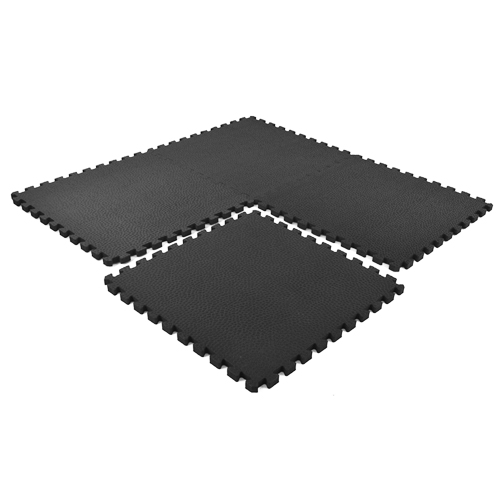How to Make an Indoor Kabaddi Surface
Related Product: Martial Arts Karate Mat Premium 1 Inch x 1x1 Meter
Firm foam flooring delivers the strength and durability required to create the desired layout for this sport. It yields the grip that the athletes need to jump to avoid other players.
Foam also provides a little bit of cushioning for players in this contact sport, where tackling to the ground occurs multiple times per game.
What Is the Importance of the Proper Indoor Kabaddi Surfaces?
Without the right surface for kabaddi players, they may suffer stumbles or slips that could lead to injury, as well as an inability to have success in the sport. The floors used as indoor kabaddi surfaces play a huge role in the enjoyment of the game.What is Kabaddi?
Kabaddi is becoming better known in the United States, and it is a sport that’s highly popular in India and Asia, pitting two teams of seven players each on the court. A single player, called the raider, attempts to tag players on the other team and then to run back to his or her end of the court before being tackled.Until a few decades ago, kabaddi was an outdoor sport played on dirt or mud in bare feet. As the sport grew in popularity, though, synthetic indoor kabaddi surfaces became necessary to allow for championships inside an arena or a stadium.
After a long time spent testing various surfaces, officials in the sport found that a grippy foam surface delivered the perfect properties. Players eventually chose to wear shoes, rather than follow the traditional bare foot method of playing, providing the greatest level of grip on the foam mat.
What Are the Thickest Tiles That Work for Kabaddi?
 The Martial Arts Karate Mat Premium Tile is an excellent choice for indoor kabaddi surfaces where maximum cushioning is a key component. It measures 1 inch in thickness.
The Martial Arts Karate Mat Premium Tile is an excellent choice for indoor kabaddi surfaces where maximum cushioning is a key component. It measures 1 inch in thickness.
The EVA foam is extremely firm, which aids in durability for the flooring, while also helping athletes make the sure cuts they need for success in this sport. As it has a design made originally for martial arts, this floor is sure to give athletes in kabaddi the footing they need for quick movements.
Installation goes quickly, even when covering a large space, as each individual tile measures 1 by 1 meter. One tile weighs only 8 pounds, so one person can handle the installation alone, if needed.
The tiles fit together tightly, so they will not pop loose when subjected to the significant stress of people cutting, running, falling, and jumping on them. Installers do not need to use adhesive with these puzzle edge tiles, so the facility can disassemble the tiles and return to the subflooring at any time.
Note: Brand new karate mats will need to be thoroughly cleaned and broken in before using for competition in order to remove a manufacturing agent that can make the surface a bit slippery at first.
Can You Use a Tile With a Textured Surface for Kabaddi?
 A foam tile with a pebble texture surface is a good choice for kabaddi, as it gives athletes the traction they need to move efficiently and quickly during game play. The pebble texture should be minimal enough that the athletes shouldn’t notice it, but they will appreciate it when they are not slipping around.
A foam tile with a pebble texture surface is a good choice for kabaddi, as it gives athletes the traction they need to move efficiently and quickly during game play. The pebble texture should be minimal enough that the athletes shouldn’t notice it, but they will appreciate it when they are not slipping around.
The firmest EVA foam tile with a pebbled surface is the Gym Floor Workout Fitness Tile. This black tile is an outstanding choice for all kinds of athletic workouts, as it also has a nice level of cushioning in its 3/4-inch thickness.
Each interlocking tile measures 2 by 2 feet, so it’s easy for an installer to lay out the kabaddi floor in very little time. With the puzzle style edging in the tiles, they will pop together with only a little bit of force. They remain together without the need for adhesive, even when placed under the stress of having multiple players running on them at the same time.
Do Thin Tiles Work As Indoor Kabaddi Surfaces?
 For installations where the customer is looking to save some money, a thinner EVA foam tile is a smart choice for the kabaddi floor. One of the firmest options in a thin and inexpensive EVA foam for kabaddi is the Sport Plus Designer Foam Tile, which measures 3/8 inches in thickness.
For installations where the customer is looking to save some money, a thinner EVA foam tile is a smart choice for the kabaddi floor. One of the firmest options in a thin and inexpensive EVA foam for kabaddi is the Sport Plus Designer Foam Tile, which measures 3/8 inches in thickness.
These black foam tiles use a slightly textured top surface to generate the perfect level of grip for the shoes of the athletes.
Installation goes fast, as each tile measures 2 by 2 feet to cover a lot of space quickly. The puzzle style edges go together without the need for a lot of force on the part of the installers and without the need for adhesive. Keep in mind that the thinner the matting the less protection it will provide against falls.





